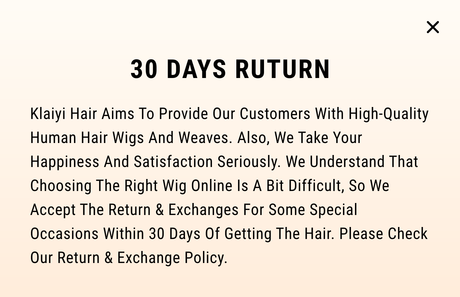Join The Forum To Get inspired Ideas
The Karen Haircut: How to Avoid It
The "Karen haircut" has become more than just a hairstyle—it’s a cultural phenomenon tied to a specific stereotype. Known for its sharp angles, asymmetrical bob, and bold blonde highlights, this cut is instantly recognizable. But how did it become associated with entitled behavior? And if you want a chic, modern look without the negative connotations, how can you avoid accidentally getting a "Karen" haircut? Let’s break it all down.
1.What Does a Karen Haircut Look Like?
Source:Reddit
The classic Karen haircut is usually a short, angled bob with blonde or platinum highlights concentrated at the top. It often features: Asymmetrical layers – One side may be slightly longer than the other. Chunky highlights – Harsh, contrasting streaks rather than subtle balayage. Blunt bangs or side-swept fringe – Sometimes paired with a spiky or overly teased crown.
2.Variations of the Karen Haircut
Source:Reddit
While the short bob is the most common version, there are a few variations:
Long Karen Haircut – A longer, layered version with face-framing pieces, often still featuring bold highlights.
Pixie Cut Karen – A shorter, spikier take, usually with the same stark blonde streaks.
The "Can I Speak to the Manager?" Bob – The most infamous version, with sharp angles and a slightly aggressive vibe.
The hairstyle itself isn’t inherently bad—it’s the attitude and stereotype that have given it a negative reputation.
3.Where Did the Karen Haircut Come From?
Source:Business Insider
The term "Karen" didn’t start with the haircut—it evolved from internet culture. Here’s how it became linked to this specific style:
1. Pop Culture & Early Stereotypes
Movies like Mean Girls (2004) featured characters with sharp, blonde bobs, setting an early precedent for the "entitled white woman" look. Over time, this evolved into the "Karen" meme.
2. The Rise of the Internet Karen
Reddit and Twitter played a big role in popularizing the term. Stories of middle-aged women behaving rudely—often demanding to "speak to the manager"—became viral, and the haircut became a visual shorthand for this behavior.
3. The Central Park Incident (2020)
A defining moment was when Amy Cooper, a white woman, falsely accused a Black birdwatcher in Central Park. Her appearance—complete with the classic blonde bob—cemented the link between the haircut and racial bias.
4. Historical Parallels
The "Karen" stereotype has roots in older terms like "Miss Ann," used in Black communities to describe privileged white women who weaponized their status. The haircut became a modern symbol of this archetype.
4.Why Is It Called a Karen Haircut?
Source:ABC News
The name "Karen" wasn’t chosen at random—it’s a common, inoffensive name that became a stand-in for a specific type of behavior. Here’s why it stuck:
The "K" Sound – Linguists suggest that hard "K" sounds (like in "Karen" or "Kyle") make words sound more aggressive, which fits the stereotype.
Memes & Viral Moments – As more videos surfaced of women with this haircut acting entitled, the association grew stronger.
Visual Branding – Just like "mullet" or "pixie cut," the Karen haircut became a recognizable style—but with social baggage.
5.How to Avoid a Karen Haircut (If You Want To)
Source:Fun Quizzes
If you love a short bob or blonde highlights but don’t want to be mistaken for a "Karen," here’s how to style your hair without falling into the stereotype:
Opt for Softer Layers
Instead of a sharp, asymmetrical bob, ask your stylist for: Textured ends – Soft, blended layers look more modern. Face-framing pieces – Gentle waves or curtain bangs can soften the look.
2. Ditch the Chunky Highlights
Try balayage or babylights – These create a more natural, sun-kissed effect. Avoid stark contrasts – If you go blonde, keep it blended rather than blocky.
3. Choose a Different Short Style
A sleek, blunt bob – Without the harsh angles, it looks polished, not aggressive. A shag or wolf cut – These trendy cuts have movement and edge without the "Karen" vibe.
4. Communicate Clearly With Your Stylist
If you’re worried, say: "I want a modern bob, not too angular." "Can we avoid the ‘Can I Speak to the Manager’ look?" (Most stylists will know exactly what you mean!)
6.Final Thoughts: Is the Karen Haircut Really That Bad?
The truth is, there’s nothing wrong with a short blonde bob—it’s the stereotype that’s the issue. If you love the cut, rock it with confidence! But if you’re looking for a fresh, updated style, there are plenty of ways to keep your look chic without the negative associations.
At the end of the day, a haircut shouldn’t define your personality—but it’s always good to be aware of cultural trends. Whether you embrace the Karen cut or avoid it, the most important thing is that you feel great in your own hair.




















